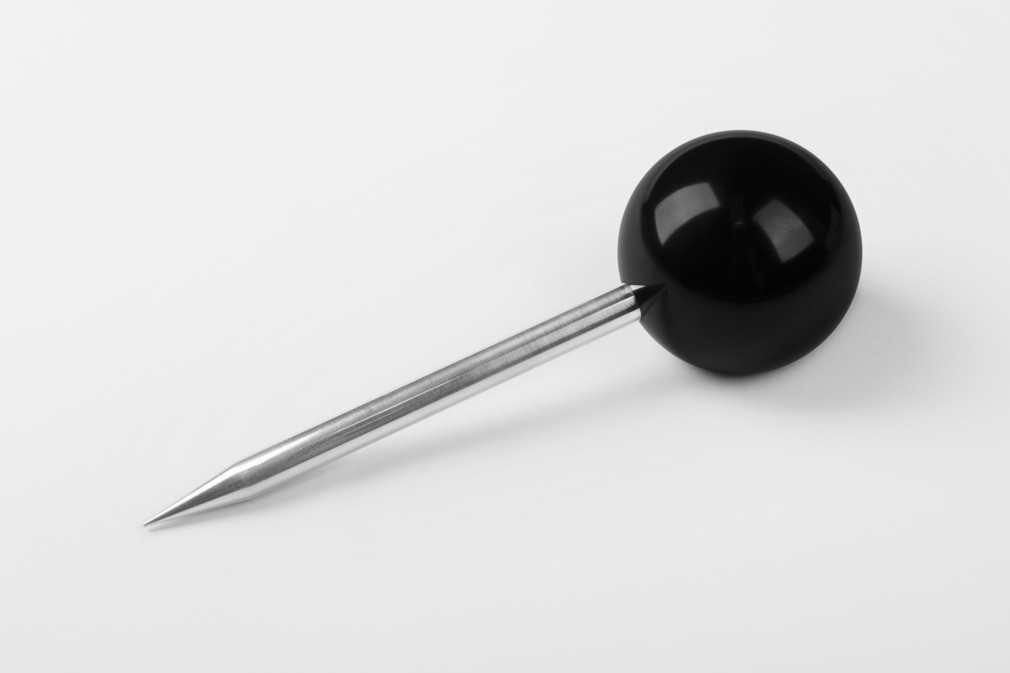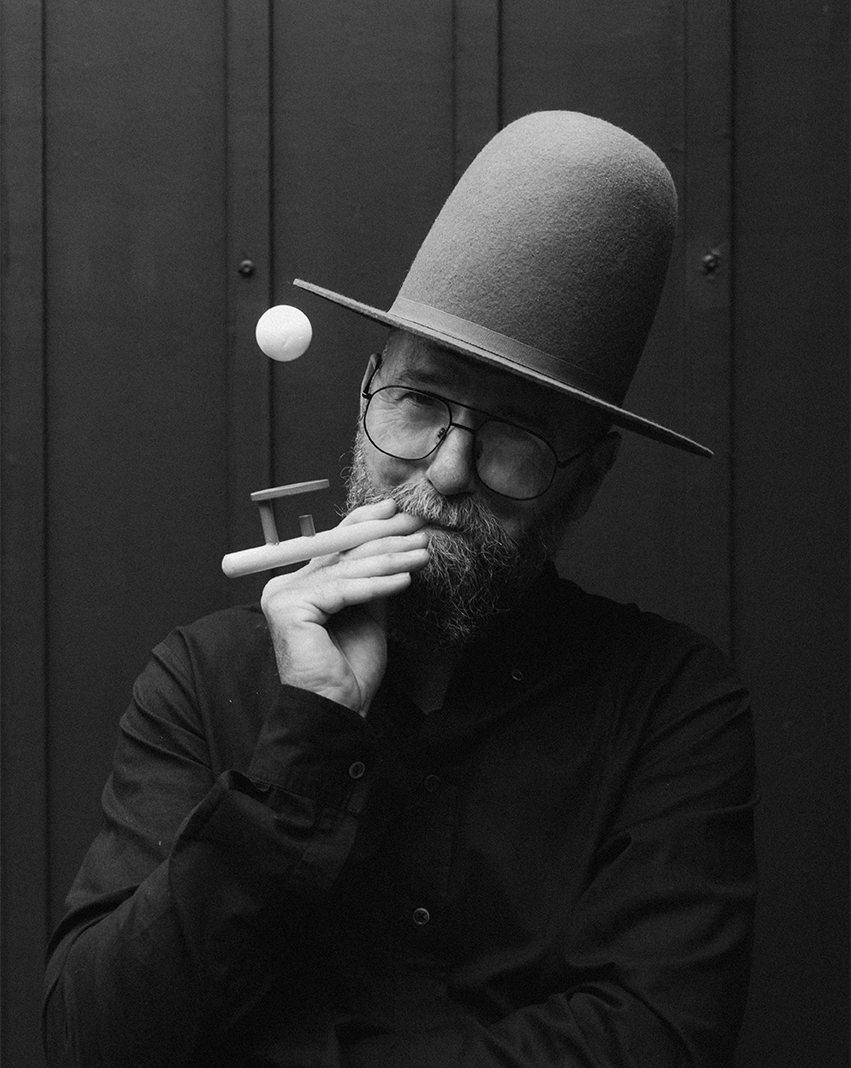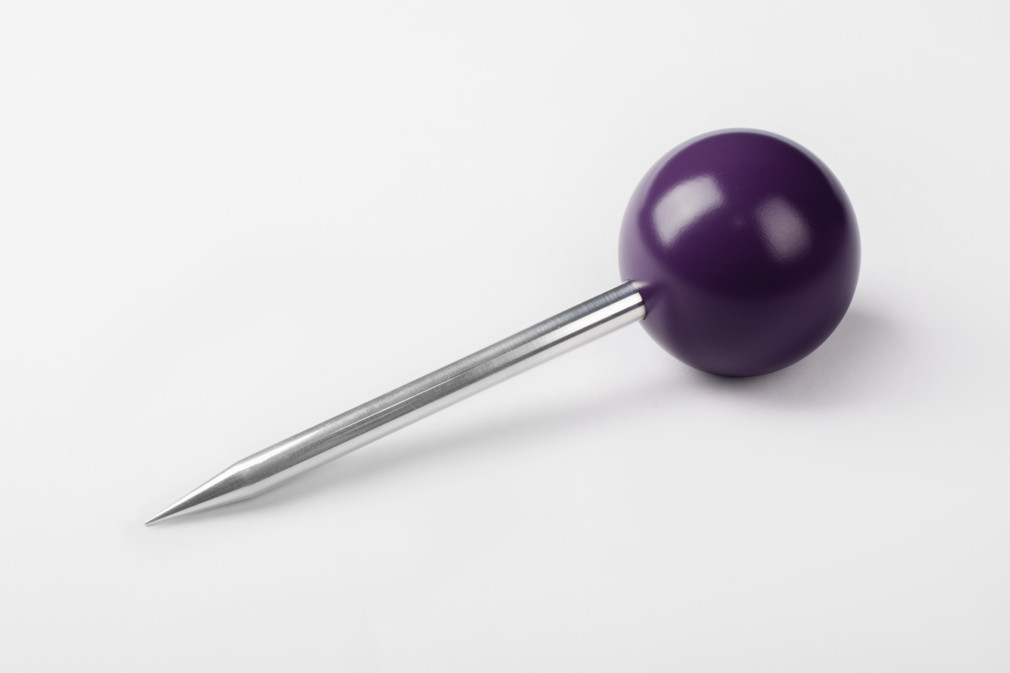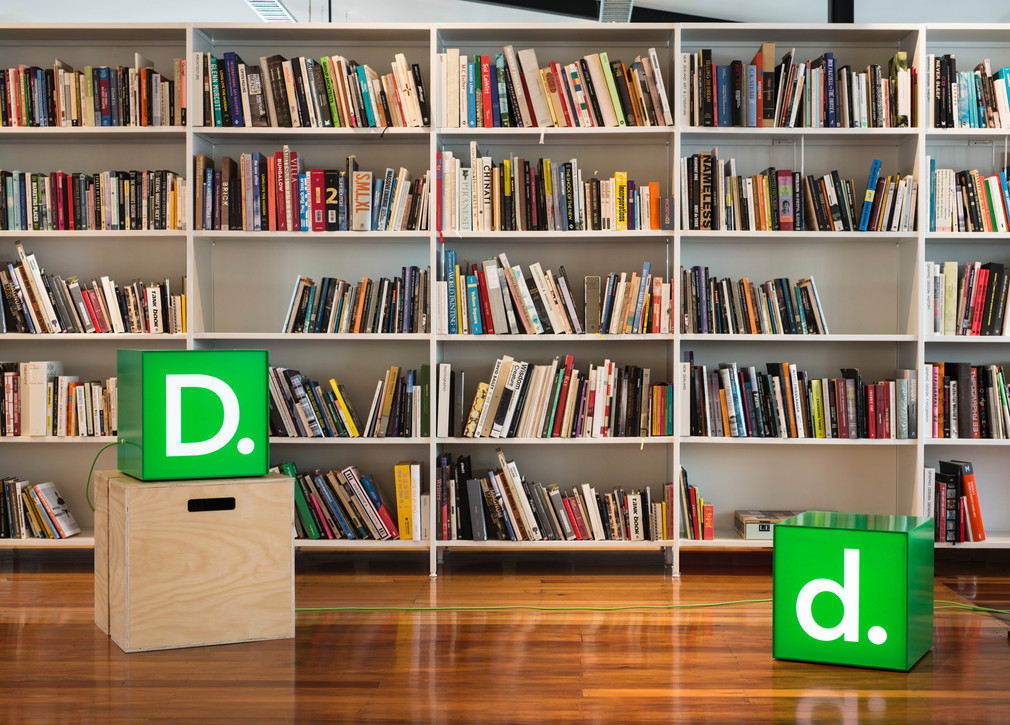The Designers Institute runs many initiatives throughout the year to celebrate the achievements of the design community.
The Best Design Awards
The Best Design Awards are Australasia’s largest annual showcase of excellence across graphic, digital, motion design, product and spatial along with the Value of Design Award, Social Good Award and the Toitanga award recognise the changing nature of our design industry. Year on year, the event grows in both its size and its impact.
View all of the 2025 winners on the Best Awards site.

The Best Design Awards 2025 campaign was created by the team at Milk.
Best Design Awards History up to 1998
As recorded by Peter Haythornthwaite, ONZM, LifeDINZ
In the beginning
The 1970s saw unprecedented growth in the New Zealand design profession, not only in numbers of practitioners but in the scope and standard of work. Designforces was the pre-eminent design consultancy of the time, together with Jasmax. Design was taught at Wellington Polytechnic, Elam (the University of Auckland), Ilam (Canterbury University) and ATI (now Auckland University of Technology). Many of the leading designers had recently returned from Europe and the United States.
Communication Arts and Graphics were the two benchmark magazines of the graphic design field, and the Swiss School of Design was still relevant but its influence was waning. It was in this climate that in 1976 Stan Mauger, along with Ann Shanks, Mark Cleverley and others, proposed the first National Graphic Design Awards, the precursor of the Best New Zealand Design Awards.
John Massey, the highly respected head of the CCAs Centre for Advanced Research in Design (The Container Corporation of America later merged with JC Penny) was invited to be the head judge along with Maurice Askew (Head of Graphic Design, University of Canterbury, School of Fine Arts), Hamish Keith (Chairman of the Queen Elizabeth Arts Advisory Council), and Martin Salmond (Art Director, J Ilott Ltd, Auckland).
The National Awards attracted 300 entries (of which 130 were exhibited as finalists) in the categories of advertising, typography, corporate identity, technical literature, publicity, packaging, illustration, architectural and exhibition graphics, and pattern. Four awards were available in each category, but the judges only awarded the full four in advertising, corporate identity and packaging. Each award winner received a tile designed by Mark Cleverley (which included a cartoon by Don Hatcher) and manufactured by Crown Lynn. Bret de Thier received the Letraset Travel Award for outstanding design work and incidentally, for the best use of Letraset. Amongst other award winners, Mark Cleverly was recognised for his handsome stamp designs and ceramic pattern design. An exhibition, together with a lecture series, was held at the Auckland War Memorial Museum, and the first time since the early design exhibitions of the 60s this award galvanised New Zealand designers, recognising the commercial and cultural benefits of design and the strength of individual designers. It was decided that another programme would be run after a 2-year rest – but this was not to be.
Five years later
For 5 years, David Bartlett (the founder of Artspec) and Peter Haythornthwaite discussed how a new award programme could be started, and then in 1988 David, along with his partners Mike McLaughlin and Richard Hook, committed Artspec to back and manage a programme covering all categories of graphic design. It was named the Best New Zealand Design Awards. The steering committee comprised Mark Adams (President NZSID), Peter de Beer, Fraser Gardyne, Peter Haythornthwaite (Convenor), Martin Hill, Stan Mauger, Alan Sanders and Andrea Thomas, with Jane Natoli as coordinator. The judges comprised Australian design Gary Emery, Stan Mauger, Hong Kong consultant Henry Steiner, and multi disciplinary American designer Michael Vanderbyl.
As with the previous awards, great care was taken to ensure that they met the demanding ICSID and Icograda rules of fairness and consistency. Artspec as principal sponsor was supported by BJ Ball Papers, McCollam Printers, Spicer Cowan, Western Litho and Wiggins Teape (The Paper House). There were also 21 other sponsors and contributors. The awards were put together in less than 7 months with three primary objectives: to demonstrate to business and industry the advantages gained through the effective use of graphic design; to applaud designers who were making outstanding contributions in their fields; and to enable New Zealand designers to benefit from the experience and insight of internationally recognised designers. The Awards collateral was created by 7 different consultancies, with surprising synergy.
563 entries were submitted for the 21 entry categories, four special awards and a most promising student award. Winners receiving more than one category Gold or Silver Award included de Beer Design, Designworks, PeterHaythornthwaite Design, No Straight Lines (Fain Flaws), and Sanders Design. The Mayor of Auckland, Dame Cath Tizard, launched the Awards at the Regent to media, industry leaders, sponsors and designers. A number of very well attended seminars were held with the international judges as speakers. In addition to the Awards gala presentation and the exhibition, which travelled to the three main centres, a 164-page annual was produced through sponsorship.
Later each of the international judges designed a limited edition Artspec/NZSID poster. Judges Gary Emery, Michael vanderByl and Henry Steiner commented on the high standard of New Zealand design and were impressed with international standard of much of the work.
The second Best Awards
One year later, again with Artspec as the principal sponsor and 46 other supporters and sponsors (of whom BJ Ball remains a major sponsor), the 1989 Best Design Awards were held. This time, Grant Alexander was the Convenor, with a steering committee of 17 fellow professional designers. Deliberately, a very different group of judges from those selected in 1988 were invited to New Zealand, comprising internationally recognised designer Thomas Geismar of Chermayeff and Geismar Associates, New York; David Hillman, magazine designer and partner in Pentagram; and Kaoru Kasai, celebrated Japanese typographer and designer. Barry Ellis, a well-respected Wellington designer, with a broad practice background, was the New Zealand judge. 435 entries were submitted of which 16 received silver awards (no golds were given) and four special recognition awards along with one student scholarship. This time David Bartlett’s new design consultancy, Graphikos, received very high prominence along with many small and established consultancies. Kasai commented he felt a great sense of freshness and youth in the work.
David Hillman encouraged New Zealand designers to create their own identity without direct reference to overseas trends. Geismar observed that much of New Zealand’s better work had not been entered, and Ellis surmised that New Zealand with its wonderful environment and diversity of peoples has a good deal to offer, and we should ensure that this is reflected in the work we produce. The award presentation was held in Wellington and the exhibition travelled from Wellington to Auckland and then on to smaller centres. Again through generous sponsorship, a 164-page annual was produced with numerous copies sold, as in 1988, through book and stationery shops.
1991 Designers Institute of New Zealand is formed
The enormous amount of time involved in staging the Best Awards took its toll and it was not until 1992, under the spirited leadership of DINZ President Hugh Mullane, that another awards programme was held. This was the first time that awards were run by the Designers Institute of New Zealand – the new organisation formed by the merger of NZSID and NZAID. There was a new briskness to the awards. The disciplines were expanded to include graphic, interior, product, fashion and craft. Terry Stringer was commissioned to design the discipline and category gold award that was aptly named the Stringer (Terry used Leonardo da Vinci’s hand measure of man to symbolise design and Nikau Palm to express the New Zealand spirit). The broad base of advisers was put together, many of who had consistently given their time on the previous Bests.
The presentation function was held at the Auckland Town Hall; it was an energetic celebration of design – boisterous, impassioned, very audio visual and unforgettable. Eleven Stringers were awarded: graphic – Black Stump, Designworks, PeterHaythornthwaiteDesign (2), deBeer/Adams and Cheah Chuni: product – PeterHaythornthwaiteDesign and Eric van Helmond; craft – Allan Preston and PeterHaythornthwaiteDesign; interior – Inscape, Gascoigne Assoc and Noel Lane (2). Again to ensure a balanced appraisal of work, the judges comprised New Zealand and overseas designers, with Niels Different as the main product design judge.
Four - year hiatus
There followed a four-year hiatus due to too few having to commit too much time and energy to stage such comprehensive programme. However, in 1995 Fraser Gardyne, Murray Pilcher and Michael Major (along with a small committee) took on the responsibility of running the next Best Awards. The disciplines were limited to craft, graphic, interior and product design. As in previous years, it was the passion of the committee combined with the support of the sponsors that made the awards a success. John Britten was posthumously given an award, which is now called, in his honour, the John Britten Award – the highest recognition given by DINZ to an outstanding individual for leadership, vision and achievement. The presentation and exhibition were held at the Maritime Museum, downtown Auckland, and were coupled with a conference on team-based design with the main speakers being Tom Schnackenberg (America’s Cup team leader) and Michael Bryce (Australian Olympic Games bid leader). The judges comprised Michael Smythe and John Hatrick-Smith for product; Peter de Beer, Mark Adams and Lindsay Marks for graphic; and Hugh Mullane, Mark Gascoigne and Ron McKenzie for interior. Stringers were awarded to Custance Design (interior), Origin Design (graphic) and Peter Tasker Design (product).
The foundation for the Design-Led Business Award
Two years later, the 1997 Best Awards took place in Auckland, with the same entry disciplines as 1996. The committee comprised Jill Carroll, Bryn Chapple, Paola Dashwood, Peter Haythornthwaite (Chair), Bina Klose, Murray Pilcher and Kim Willis. James Coe, (former Director of Wellington Polytechnic, School of Design) was the recipient of the John Britten Award and Max Hailstone was, posthumously, given the Designers' Institute of New Zealand Outstanding Achievement Award. The foundation was established for the Design-led Business Award through the vision of Bina Klose and Bryn Chapple. The judging panel was made up of many well respected designers (NZ and Australian) and business leaders including Michael Barnett, Stuart Gardyne, Euan McKechnie, Hugh Mullane, for interior; Stephen Allan, Adam Laws, Chris Mitchell and Tony Parker for product; and David Bartlett, Dick Brunton, Annette Harcus and Alistair Lang for graphic.
The presentation evening was held in the pure architectural environment of the New Auckland Art Gallery, with the exhibition at the Auckland City Library. Only two Stringers were awarded, one to Fisher White Architecture (interior) and the other to Designworks (graphic). The evening created a surprising camaraderie amongst the attendants. Maxim designed the annual to a brief, which ensured that the sponsors’ advertisements, while individual, were in keeping with the structure of the publication.
1998
The dedication of time and the financial knife-edge meant that a 1998 award programme was unlikely. However, Gesundheit, the project management arm of AGM Publishing proposed to DINZ that it run the Best programme on a yearly basis looking after sponsorship and all of the administrative functions related to the call for entries, judging, exhibition and presentation evening.
Dave Clark, DINZ President, was the convenor supported by a small group of designers respected for their work and professional integrity. So as to ensure bipartisanship in the judging, the panel was expanded to 6 judges in each discipline. Gifford Jackson was the recipient of the John Britten Award and ECC Lighting received the inaugural Design-led Business Award. The Awards evening was held at the Auckland Town Hall along with the exhibition. As in the preceding year only two Stringers were awarded, on to Fisher and Paykel (product), and the other to PeterHaythornthwaiteDesign (graphic).
Writing such an abbreviated history has sadly meant that many of the designers and sponsors who have been critical to the success and continuity of the Awards have gone unmentioned. This omission necessitates that in the near future the history of the New Zealand Best Design Awards is comprehensively recorded with a full list of committees, sponsors and winners. These people must be recognised!
The Best Design Awards demonstrates the economic sense of design to New Zealand business, recognises outstanding design and designers’ achievements, bears witness to the cultural influence of inspired creativity, and uniquely unifies the profession. It is the responsibility of the profession to ensure that the Best Design Awards continue to be run free of bias, and serve as an accurate measure of our development and, we trust, our progress. The new years of the 21st century will reveal the extraordinary talent of young designers and encourage business to use the “extraordinary power” of design to compete and profit internationally.
As recorded by Peter Haythornthwaite, ONZM, LifeDINZ





